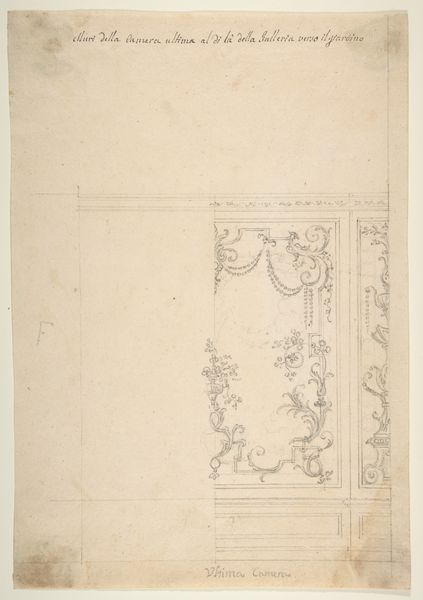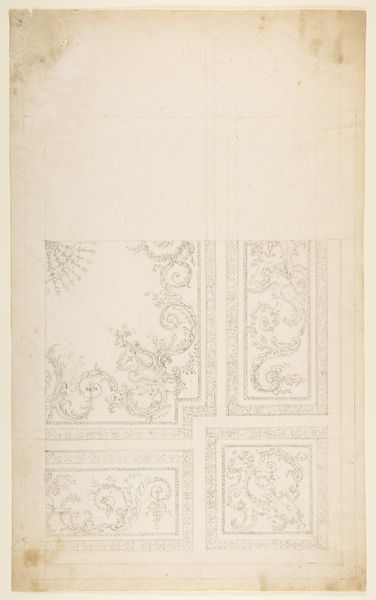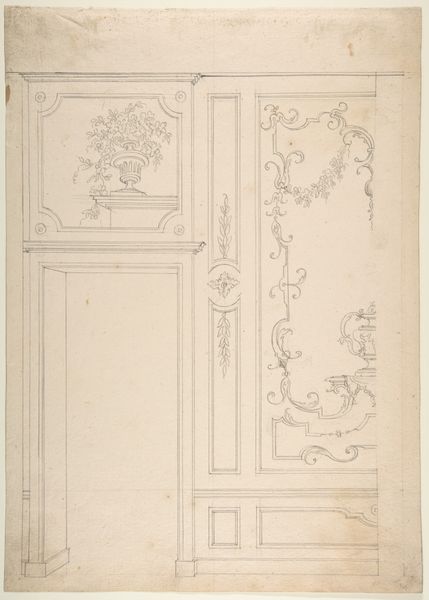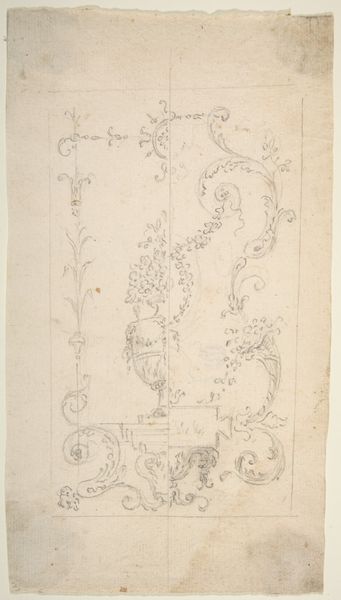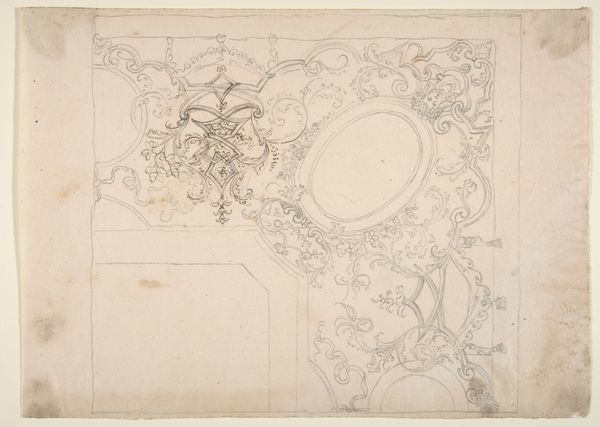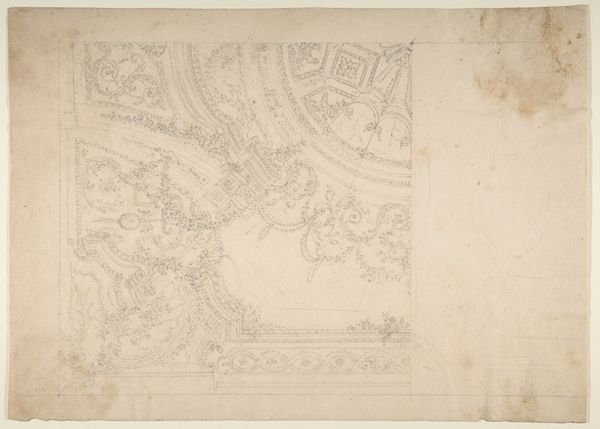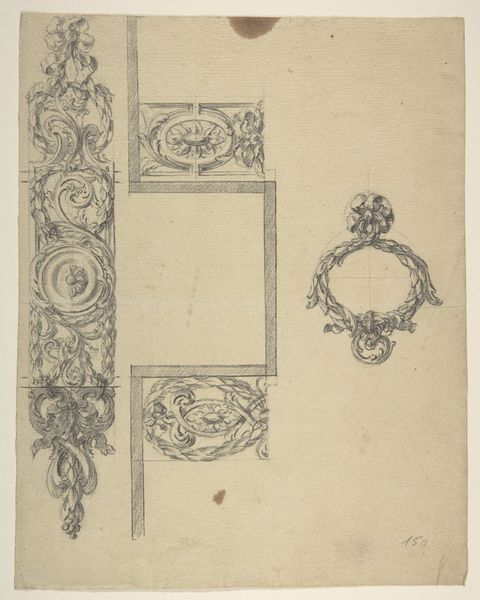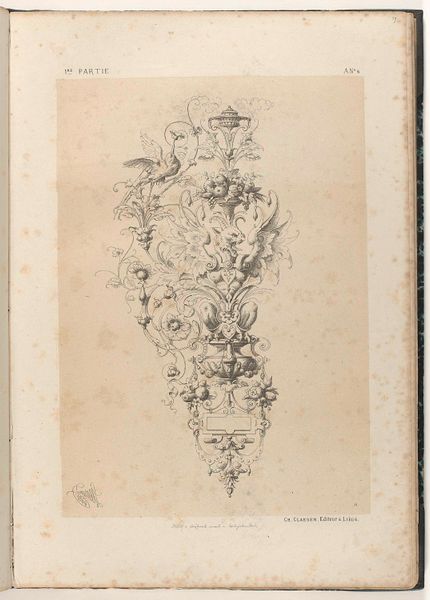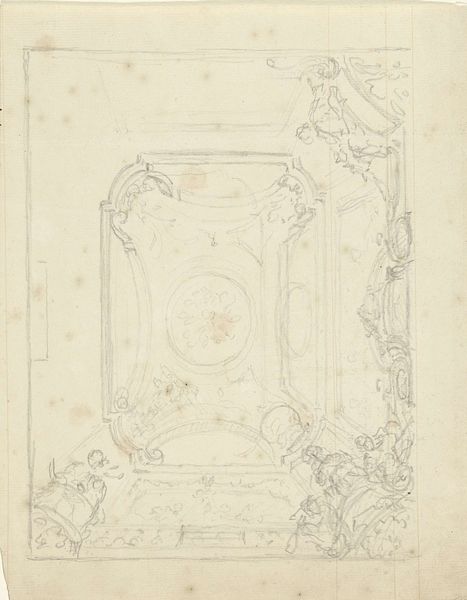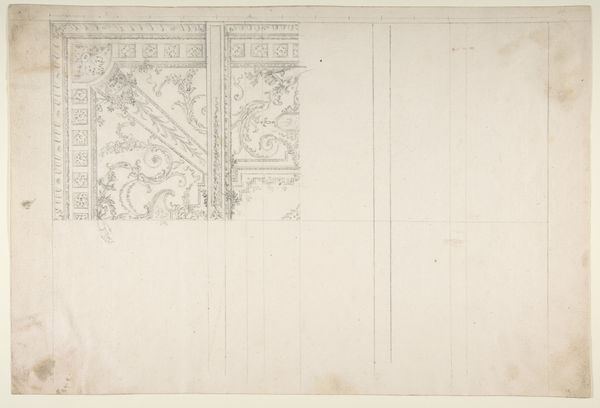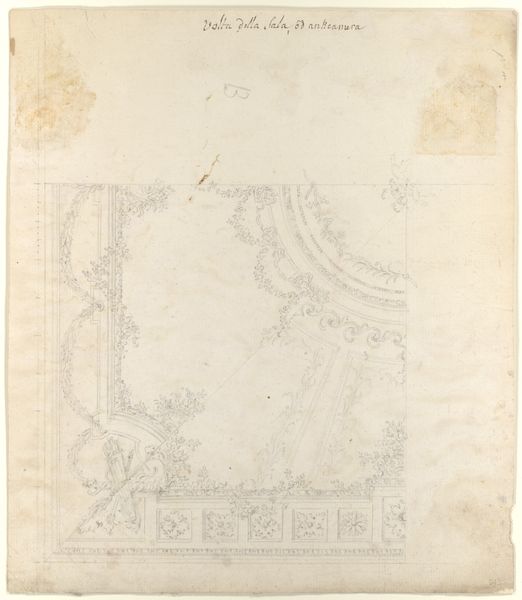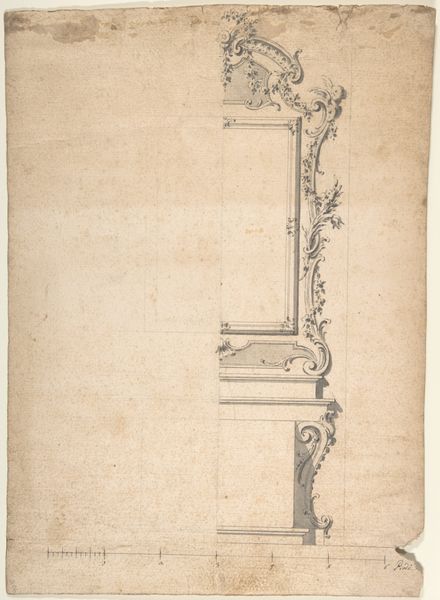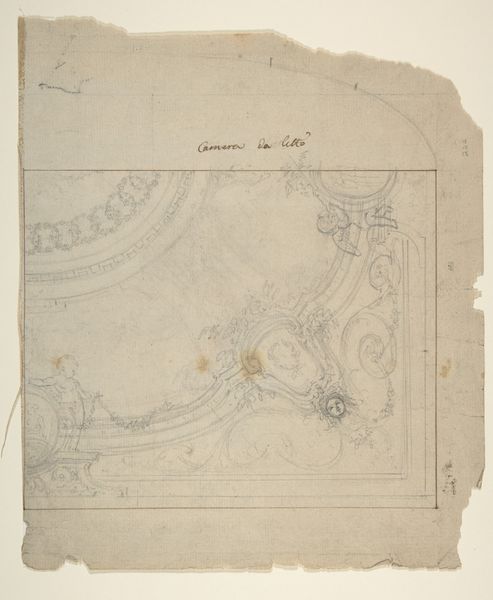
drawing, ornament, print, etching
#
drawing
#
ornament
#
baroque
# print
#
etching
#
etching
Dimensions: 13 9/16 x 10 11/16 in. (34.4 x 27.1 cm)
Copyright: Public Domain
Curator: We're looking at "Wall Design," an etching by Leonardo Marini dating from between 1700 and 1800, here at the Metropolitan Museum. What strikes you first? Editor: Its incompleteness. There's a defined, baroque side, brimming with elaborate ornamentation, but half the sheet is blank. It makes me wonder if it’s a discarded sketch. Curator: It’s intriguing, isn’t it? This was likely a design intended as a print. The artist presented us with a suggestion, maybe one side was completed for patron approval, an invitation to imagine how the rest might unfold, in symmetry or asymmetry? Editor: That's a fascinating thought – an early form of interactive design. The asymmetry would feel rather daring, I imagine, in an age so governed by order. Baroque design often uses intricate symmetries as demonstrations of wealth and order, so how do we know this proposed layout isn't a challenge of societal and aesthetic convention? Curator: Baroque interiors were often about creating illusions, overwhelming the senses. The abundance of ornament – floral patterns, flowing lines – symbolizes a desire for escape, perhaps? Editor: Indeed. The print format would have been interesting, given the political realities for design under Louis XIV. This seems almost democratizing when envisioning the potential mass production of architectural ornamentation during that time. Curator: These images served to disseminate taste. Prints allowed for a wider distribution of styles, shaping expectations and even social aspirations across various strata of society. The image could reach beyond the elite. Editor: So a paper mirror reflecting an architectural longing. I also sense a fragility. Curator: Well, this sketch feels light and fleeting against a weighty historical background. But its impact continues through design possibilities it keeps hinting at. It serves to ask new questions, rather than dictate a concrete solution to visual problems.
Comments
No comments
Be the first to comment and join the conversation on the ultimate creative platform.
